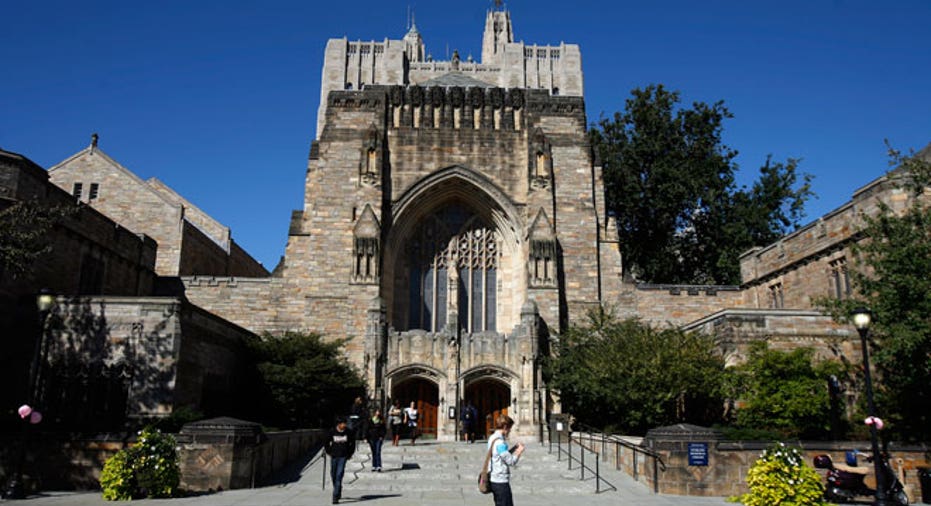College is too Expensive, But How Do We Fix That?

No one disputes that college affordability and accessibility are increasingly becoming an issue for students and their families. What’s not as clear is how to combat these problems.
“There is no skepticism that there are major flaws right now with the higher education system, everyone wants to increase access and reduce costs, but discerning why college costs what it does gets very complex very quickly,” says Debra Humphreys, vice president for policy and public engagement at The Association of American Colleges and Universities.
President Barack Obama outlined his solution in August to create a ratings system that takes into account a school’s access, affordability and alumni success that potential students can use to analyze and compare schools during the application process.
“Whether we’re talking about a two-year program, a four-year program, a technical certificate, bottom line is higher education cannot be a luxury. It’s an economic imperative: Every family in America should be able to afford to get it,” Obama said last year when he unrolled the plan at the University of Buffalo.
In the same speech, the president pointed out that a college degree has never been more expensive, with the average tuition at a public four-year college increasing more than 250% as the average student loan debt hits $26,000.
The ratings system would evaluate schools' post-graduation earnings, average student loan debt and graduation rates. The president’s plan would eventually tie the amount of federal aid schools receive to the rating system—and that’s where some schools and experts are calling foul.
“No one I’ve spoken with thinks this model on rating students on a few data points will magically bring down costs and make college more affordable,” says Humphreys. “There is such diversity among institutions on what and why things costs what they cost.”
And the clock for creating the rankings is ticking: The White House wants the measurement system made public by the 2015 school year. In theory, the rankings would mean students at schools with low tuition prices with a heavy low-income student population and high rates of student success would receive larger Pell Grants and better loan terms from the government. On the other side, poorly-rated campuses would lose funding. The federal funding tie in wouldn’t go into effect until 2018.
The rankings system isn’t novel -- magazines have been doing it for years, most notably “U.S. News and World Report’s” school ranking. However, Mark Schneider, president of College Measures, points out that the families using this guide are already the “crème de le crème.”
“These students are already highly-motivated with highly-educated parents, it’s the low-hanging fruit for colleges, if you start including rankings of regional campuses and rank 1700 schools instead of 100, you are trying to affect millions of kids who are not used to looking at these metrics.”
The president has authority to collect, manage and publish data to create the rankings, but will need Congressional approval to tie funding to the system. Experts agree the more information made available to students the better, but some aren’t convinced this latest initiative is going to be effective. The information would be presented online, which after the botched rollout of healthcare.gov, has some experts wary.
“Getting the information on a government website isn’t going to cut it, we have to be better about designing and disseminating the information,” says Schneider. “What is your faith that they have the ability to design something that interacts and provides the information in the engaging manner that our youth demands from websites? You need actual people, like guidance counselors, that know what they are talking about sitting down and talking with students.”
What’s more, Todd Bloom, Hobsons’ chief academic officer, worries that the rankings would incentivize schools to misrepresent data and “game” the system --a critique often associated with schools looking to place high on the “U.S. News and World Report” rankings.
A report from the conservative-leaning American Enterprise Institute concludes that most colleges wouldn’t fare well under the ranking system—particularly community colleges.
Community colleges would most likely rank poorly because of the type of students they serve, says Humphreys. “The data collected only count full-time students in the fall, which community schools say will only represent about 6% of their student body.”
Bloom says the shopper, in this case students and their families, should lead the change. “As the rise of college costs continue to greatly outpace the increase in median family income, the shopper will cause the providers to change, or risk going out of business.”
Schneider says changing the college application process hinges on changing the approach to 10% of students. “You don’t need to change everybody’s approach, just the marginal customer,” he says. “If we get 10% of students to shift how they select schools, that creates competitive market forces and it will have an enormous impact and we can leverage some serious change.”
He adds that for the most part, the data that are going to be available on the rankings system are already available through employment insurance information and tax data. “You can build a whole system with this information without every talking to a student, if you rely on students to provide data you are dead.”
Humphreys adds that students need to focus on their return on investment. “If you want to be a social worker, that is great and you should pursue that since we really need them, but know that you aren’t going to make as much as a doctor, lawyer and engineer.”



















